
NAVIGATION INSTRUCTIONS
HOVER
over any image for detailed caption. CLICK on any image
for enlarged preview.
ATTENTION
PHOTO EDITORS
For
a password to access the
SANCTUARY hi-res
photo library including all images featured in this
gallery,
please email
Media@DancingStarFoundation.org
with
PHOTO PASS in
the subject field. Thank you!
-
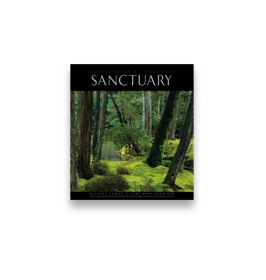
SANCTUARY
Global Oases of Innocence
-

BHUTAN
Bhutanese Procession, Thimphu, Bhutan.
For six months of the year, hundreds of monks, in company with the Chief Abbot of Bhutan, or Je Khenpo, live in the quarters of the national assembly, or Tashichoedzong. When the monks leave their summer quarters in Punakha Dzong, they walk in a long procession headed for Thimphu. Upon arrival in the capital, much celebration, music and dance is performed outside Tashichoedzong, as seen here. © 2008 Dancing Star Foundation
-

CALIFORNIA
Common Murres (Uria aalge) and Brandt's Cormorants (Phalacrocorax penicillatus) nesting at the Farallones Islands National Wildlife Refuge.
A mere 28 miles West of the Golden Gate Bridge, this remarkable sanctuary is home to more breeding pairs of seabirds and marine mammals than anywhere in North America outside of some parts of Alaska. The vision of President Teddy Roosevelt, the Farallones are also one of the most inaccessible places to reach within the entire U.S. Fish & Wildlife Refuge system nation-wide. On this particular day, the sea swells were a mere 12 feet high, the mists and fog penetrable. We were lucky. © 2008 Dancing Star Foundation
-
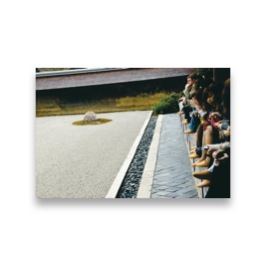
JAPAN
Ryoan-ji, Kyoto, Japan.
Ryoan-ji's 15 magnificently placed stones within a 248-square meter sand garden is a UNESCO World Heritage Site unto itself. The garden, designed for the Tokudaiji family during the Kamakura period many centuries ago, is a sacred place of international solemnity, and joyful meditation. But for a bryologist, it is also home to two dominant moss species protected here behind Zen walls, Polytrichum commune, and the distinctive tree moss, Pylaisiadelpha tenuirostris. © 2010 Dancing Star Foundation
-
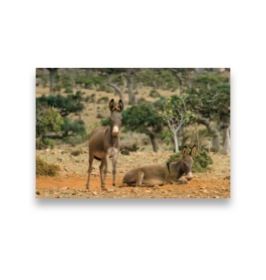
YEMEN
Two burros in the Socotra Highlands, Yemen.
This equine may well be genetically related to a possibly now extinct donkey sub-species, Equus asinus somaliensis. These two, in the Homhil Plateau area, were remarkably unconcerned by the presence of a human. © 2008 Dancing Star Foundation
-
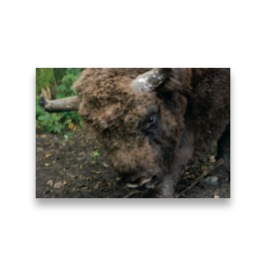
POLAND
A Wisent, or European Bison (Bison bonasus bonasus), in Bialowieza National Park, northeastern Poland.
There are only a few hundred of these magnificent mammals left in Poland, and a few hundred others across the border in Belarus. Nearly driven to extinction in the 20th century, the rehabilitation of this unique species is one of the great conservation priorities in Europe today. © 2010 Dancing Star Foundation
-
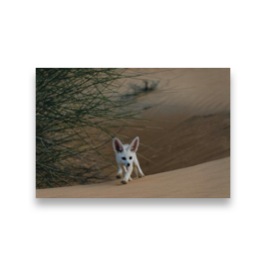
UNITED ARAB EMIRATES
Ruppell's fox (Vulpes ruepellii), Dubai Desert Conservation Reserve
Ruppell's fox (Vulpes ruepellii), photographed here in the dunes of the Dubai Desert Conservation Reserve -one of the great Gulf State sanctuaries- occurs from Morocco all the way to Iran, and is an omnivore needing up to 19 squire miles for its territory. Under IUCN (World Conservation Union) Red List categories, this elusive, largely nocturnal creature is listed as DD, or Data Deficient. Hence, while it is not officially threatened, a much better understanding of its ecology is needed to be able to assess its status. Photo Courtesy of Ryan Ingram.
-

YEMEN
Dead Sailor's Eye, Socotra, Yemen.
A rare form of sea algae, Dead Sailor's Eye, as they are referred to, is discovered by Dr. Michael Scholl and team off the coastline of Socotra, Yemen. Photo Courtesy of Dr. Michael Scholl.
-

YEMEN
Loggerhead Turtle (Caretta caretta), northern coast of Socotra.
Local Socotri conservationists monitoring and helping a massive Loggerhead Turtle (Caretta caretta) during its nesting period on a beach on the northern coast of Socotra. Some 350 of these remarkable turtles have been tagged by conservationists. The species' protection has been helped by the President of Yemen's decree that no road be built in the area where the nesting occurs. Photo Courtesy of Dr. Michael Scholl.
-

YEMEN
Loggerhead Turtles (Caretta caretta), Socotra's wild shoreline.
Nesting Loggerhead Turtles (Caretta caretta) on a northern beach along Socotra's wild shoreline, Yemen. Photo Courtesy of Dr. Michael Scholl.
-
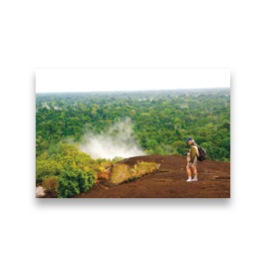
SURINAME
Dr. Russell Mittermeier, Central Suriname Nature Reserve.
Dr. Russell Mittermeier, primatologist and President of Conservation International, stands in his socks for better traction on slippery granite, just after having ascending the 375-meter high Voltzberg, a granite cliff high above the pristine jungles of the Central Suriname Nature Reserve. This is a core portion of the extensive Guiana Shield, the last great untouched tropical rainforest on Earth and one of the world's most exquisite sanctuaries. © 2008 Dancing Star Foundation
-
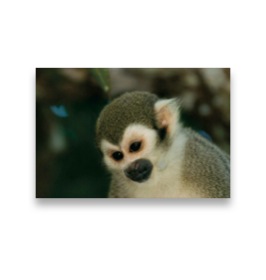
SURINAME
Spider monkey (Genus Ateles), Central Suriname Nature Reserve
A spider monkey (Genus Ateles) in the forests of the Central Suriname Nature Reserve comes very close to those few human visitors at one of the few eco-tourist research sites anywhere in the CSNR. © 2008 Dancing Star Foundation
-

PORTUGAL
Prado, Canus lupus signatus, Grupo Lobo Sanctuary
Fewer than 1200 of these unique wolves exist in the world, 300 of them here in Portugal (the others in Spain) where superstition and habitat loss have hugely impacted this magnificent animal's survival chances. At Grupo Lobo, scientists are working to breed up the numbers with eventual release back into national parks and safe corridors. © 2008 Dancing Star Foundation
-
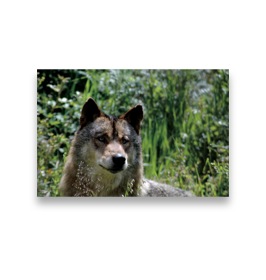
PORTUGAL
Zibru, A wolf at the Grupo Lobo Sanctuary
Fewer than 1200 of these unique wolves exist in the world, 300 of them here in Portugal (the others in Spain) where superstition and habitat loss have hugely impacted this magnificent animal's survival chances. At Grupo Lobo, scientists are working to breed up the numbers with eventual release back into national parks and safe corridors. © 2008 Dancing Star Foundation
-
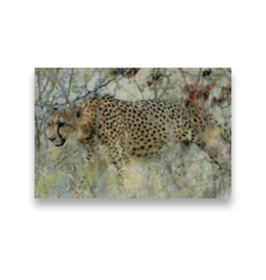
SOUTH AFRICA
Howie, Jubatus Cheetah Sanctuary.
One of the majestic cheetahs living at Howard and Devon Buffett's sanctuary in northern South Africa, Howie makes his twilight rounds. Howard Buffett, oldest son of Warren Buffett, has devoted his life to helping others, from survivors of war crimes, to children sold into slavery, innocent people caught out in civil strife, and those without clean drinking water or enough food. But he also harbors an intense conservationist ethic that has prompted him, along his wife Devon, to try and save this charismatic species, the cheetah, from extinction. © 2010 Dancing Star Foundation
-

BHUTAN
Her Majesty Ashi Dorji Wangmo Wangchuck, Queen of the visionary Fourth King of Bhutan
Her Majesty Ashi Dorji Wangmo Wangchuck, Queen of the visionary Fourth King of Bhutan, eminent author, cultural historian and philanthropist. Her Majesty -who has written the Foreword to this book, Sanctuary- has shown a tremendous commitment to conservation, and to the well being of the indigenous peoples of Bhutan, many of whom have benefited directly from her Tarayana Foundation. © 2008 Dancing Star Foundation
-
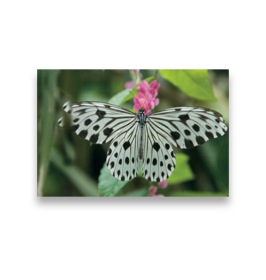
MALAYSIA
A butterfly at the Butterfly Park in Kuala Lumpur, Malaysia.
Over 175,000 butterfly species have been discovered thus far. Here, in the heart of the capital, there are more than 6,000 individual butterflies, representing 10% of all known regional species. © 2008 Dancing Star Foundation
-
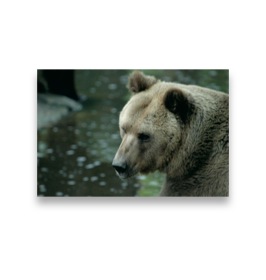
NETHERLANDS
A European brown bear at the Alertis sanctuary twenty minutes from Utrecht, Holland. minutes from Utrecht, Holland.
Although no brown bears exist in the Dutch wild, this haven for bears that have been abused represents hope for the fewer than 15,000 remaining European brown bears that are still roaming free. Largely vegetarian throughout the year, these gentle giants give birth to cubs who will remain totally dependent on their mothers for nearly 30 months. The bears at Alertis evidence clear signals that they are happy at last. © 2008 Dancing Star Foundation
-
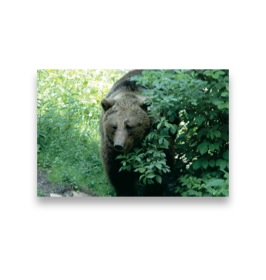
NETHERLANDS
A European brown bear at the Alertis bear refuge in Holland.
There are between six and eight distinct species of brown bear in the world (conspicuous variations in Alaskan brown bears have kept the debate alive amongst taxonomists). Two of the ancient European brown bear varieties went extinct. One was pictured in cave paintings. Another, the size of a French poodle, also disappeared. These survivors of millions of years of evolution were trapped in cages in Eastern Europe; made to perform in circuses, and left, basically, to die out. Fortunately, Dutch public opinion and the ethical convictions of specialists at Alertis, have saved these magnificent beings and given them a new life in the Netherlands. © 2008 Dancing Star Foundation
-
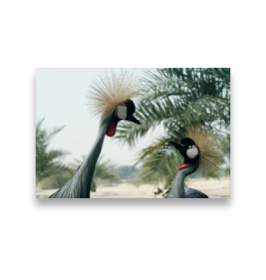
BAHRAIN
Gray Crowned Cranes (Balearia regulorum), Al Areen Sanctuary
Two Gray Crowned Cranes (Balearia regulorum) at the Al Areen Sanctuary in the Kingdom of Bahrain, enshrined by the King of Bahrain himself, displaying gestures from their wide-ranging physical and vocal antics unique to this species. The bird, while not native to the Gulf States, nonetheless avails itself of the same dry savanna habitats of the Sahara found in Bahrain. Moreover, the trees of the sanctuary here provide a special kind of habitat nearly unique to this bird, as the Grey Crowned Crane is one of only two cranes in the world that builds nest in trees. © 2010 Dancing Star Foundation
-
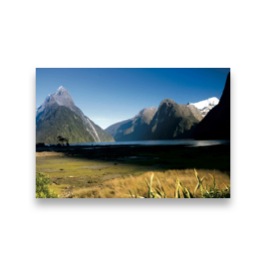
NEW ZEALAND
Mitre Peak, Milford Sound
Mitre Peak in Milford Sound, at the heart of New Zealand's largest of 14 national parks, Fiordland. This is one of the crown jewels of the Pacific and one of over 114,000 protected areas on earth. © 2008 Dancing Star Foundation
-
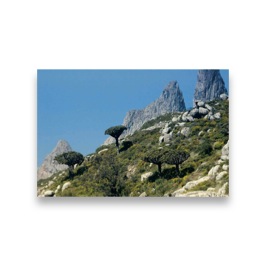
YEMEN
Mount Skand, Socotra Island
On Mount Skand, among the highest peaks on the island Socotra, in southern-most Yemen. The cinnabar trees in the image (Dracaena cinnabari) also carried the historic common name of Wild Dragon, or Dragon's Blood tree, derived from the red resin that has been called cinnabar since the time of Pliny the Elder in ancient Rome. There is now evidence suggesting that global warming and an immune system breakdown within the species are causing a reduction in the numbers of individual trees. © 2008 Dancing Star Foundation
-
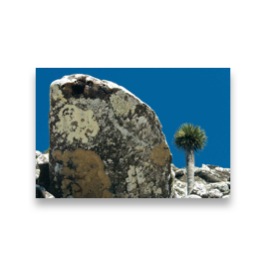
YEMEN
Cinnabar Tree (Dracaena cinnabari), Socotra
In the rocky highlands of Socotra (Yemen) in the Indian Ocean, we came upon this exquisite slope of Adenium obesum, the desert rose, and one of the most widespread of the caudiciformes. Caudex refers to the thick trunks of this succulent species, in which so much of the fluids essential to the well being of the tree are stored. © 2010 Dancing Star Foundation
-
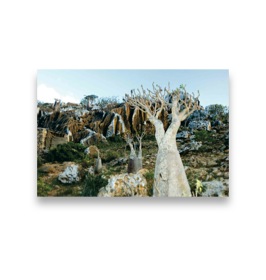
YEMEN
Socotra, Indian Ocean
In the rocky highlands of Socotra (Yemen) in the Indian Ocean, we came upon this exquisite slope of Adenium obesum, the desert rose, and one of the most widespread of the caudiciformes. Caudex refers to the thick trunks of this succulent species, in which so much of the fluids essential to the well being of the tree are stored. © 2010 Dancing Star Foundation
-
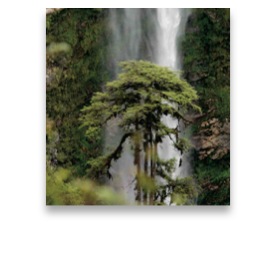
BHUTAN
Namling Waterfall, Thrumsingla National Park.
This enormous waterfall graces the heart of Thrumsingla, one of 9 national protected areas (in addition to corridors) in Bhutan. Its unexplored depths no doubt harbor a raft of species as yet unknown to science. © 2008 Dancing Star Foundation
-

NEW YORK
Rescued cow at Farm Sanctuary, Upstate New York
People who have not had the great pleasure of being around cows that are free and wild may not know that cows have a remarkably wide-ranging vocal repertoire that expresses deep feelings. Maternal and paternal bonds are powerful among cows and bulls and their offspring, and the study of their linguistic acuities and perceptiveness have scarcely been studied. © 2010 Dancing Star Foundation
-
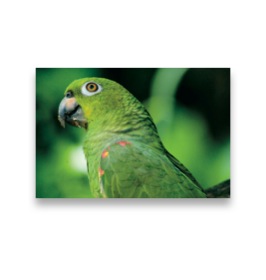
SURINAME
Mealy Parrot (Amazona farinosa), southern Suriname.
This Mealy Parrot (Amazona farinosa) in southern Suriname, though sitting happily in the wild, evidenced no fear -and even quite a bit of curiosity- about us humans. One of the largest members of the Amazona genus, whose habitats are wide ranging, with coastal, forest as well as savanna areas being occupied by them. © 2008 Dancing Star Foundation
-
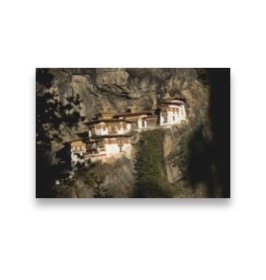
BHUTAN
Taktsang Monastery, Paro Valley
Considered by many to be the most perfect place on earth in which to mediate, it is one of the most important pilgrimage sites in all of the Himalayas. Legend has it that the eighth century Guru Rinpoche arrived at the huge granite cliff riding a tiger, and hence the common name for Taktsang, the Tiger's Lair. Numerous Tibetan saints and yogis, including the famed Milarepa (1040-1123) came here to meditate. Today, tourists can make the safe trek up to the entrance to the monastery, which was rebuilt down to every last detail following a disastrous fire -a national tragedy- in April 1998. © 2008 Dancing Star Foundation
-
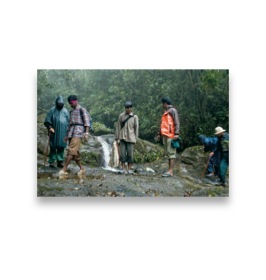
INDIA
Silent Valley, Nilgiris Biosphere Reserve.
The expedition into Silent Valley, in the heart of the Nilgiris Biosphere Reserve, South India, crosses one of many cascades during the September (second) monsoons. The region harbors a huge number of endemic flowering plants, including rare orchids, along with the largest population of Asian elephants and tigers. © 2008 Dancing Star Foundation
-

INDIA
Pushkar, Rajasthan
This woman of Pushkar, Rajasthan, India is symbolic of the beauty, poise and tranquility that can be discerned throughout this remarkable city where vegetarianism is the law, as well as a ban on alcohol; where animals are treated with respect, and the one and only sculpture representing Brahma, the Indian God of the Creation, can be found in any public temple anywhere in India. © 2008 Dancing Star Foundation
-

NAMIBIA
Cheetahs, Harnas Wildlife Sanctuary
Two baby cheetahs peer from behind cover at the Harnas ("shield" in Zulu) Sanctuary in northeastern Namibia. Namibia's more than 2,500 cheetahs is the largest population anywhere in Africa of this species, which is in fast decline. © 2010 Dancing Star Foundation
-
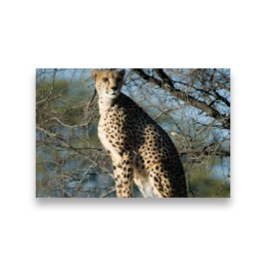
NAMIBIA
Cheetah, Harnas Wildlife Sanctuary
An adult cheetah relaxing in the late afternoon heat of Namibia, at the Harnas Wildlife Sanctuary. © 2008 Dancing Star Foundation
-
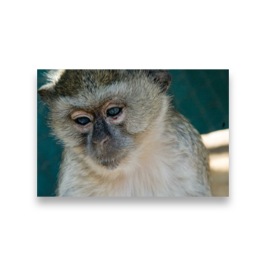
NAMIBIA
Vervet Monkey, Helvescens, Harnas Wildlife Sanctuary.
A rescued Vervet Monkey, Helvescens, one of four sub-species, at Harnas Wildlife Sanctuary, Namibia. Her unbelievable gentleness, like that of most of the residents at Harnas, evokes the power of human compassion, and the dire situation endured by so much African wildlife. © 2010 Dancing Star Foundation
-
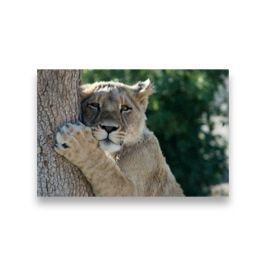
NAMIBIA
Male lion, Harnas Wildlife Sanctuary.
A one year old male lion itches himself on a tree at the Harnas Wildlife Sanctuary in Namibia. © 2008 Dancing Star Foundation
-
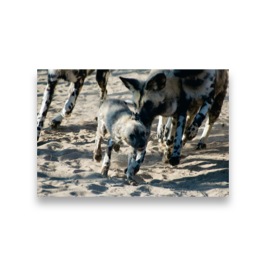
NAMIBIA
Wild African (painted) dogs (Lycaon pictus), Harnas Wildlife Sanctuary
A pack of wild African (painted) dogs (Lycaon pictus) playing with a pup. This is the largest protected pack in all of Africa, at Harnas Wildlife Sanctuary in northeastern Namibia. These gorgeous canines are critically endangered. Throughout Namibia, and elsewhere in their African range, farmers and ranchers have persecuted them, using cruel means to kill the animals. In addition, disease and habitat loss have brought them to the brink of extinction. © 2010 Dancing Star Foundation
-
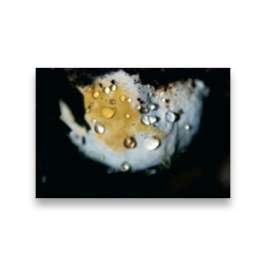
POLAND
Fungal ball, Bialowieza National Park
Water drops in early morning light on a fungal ball in Bialowieza National Park, Poland. With over 3,000 known varieties of fungus, including 283 lichens and 81 slime-moulds, 13,000 known animal and insect species and 809 flowering plant species, Bialowieza constitutes one of the most important forest ecosystems in all of Europe, and represents the last of the post-Ice Age deadwood forests. At one time, all of Europe was covered in such forest. Today, this forest has shrunk to a mere 1,250 square kilometers, a little more than one-third the size of Yosemite National Park. © 2008 Dancing Star Foundation
-
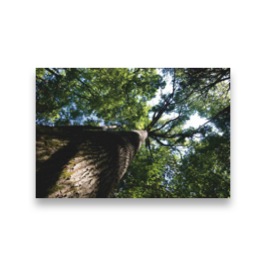
POLAND
One of the more than 2500 large trees in Bialowieza National Park, Poland.
This Polish puszcza, or forest, is one of the few sanctuaries in the world that is as devoted to the dead as to the living, for it is within the deadwood that a large contingent - nearly 25%- of all biodiversity is to be found. Sadly, throughout most of Europe, as well as the rest of the world, habitat managers, forest rangers, and fire prevention authorities view deadwood not as ecologically critical components of the forest, but as a hazard to be removed. © 2008 Dancing Star Foundation
-
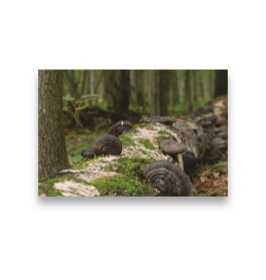
POLAND
Bialowieza National Park
Deadwood with flourishing fungal species, Bialowieza National Park, Poland. © 2008 Dancing Star Foundation
-

JAPAN
Dr. Hiroyuki Akiyama, Saiho-ji, Kyoto.
Dr. Hiroyuki Akiyama, one of the foremost experts in the world on moss species, photographs moss at Saiho-ji, in Kyoto. Akiyama is concerned that global warming might be adversely affecting at least one of the moss species -copper moss (Scopelophila cataractae)- previously found in great profusion but now beginning to wane. © 2008 Dancing Star Foundation
-
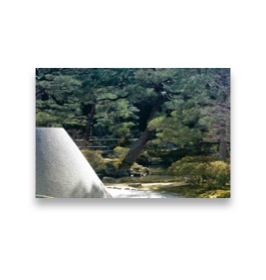
JAPAN
Miniature Mount Fuji sand garden, Ginkaku-ji (temple), Kyoto.
There are 22 species of moss at this temple, whose five hundred year legacy of ecological and aesthetic cultivation has made this site one of the most important and elegant Buddhist temples in the world. © 2008 Dancing Star Foundation
-
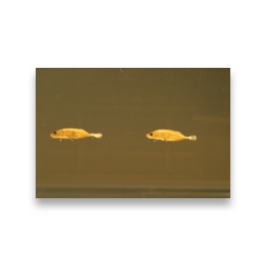
JAPAN
Two extinct fish, Kyoto region.
Two extinct fish from a lake in the Kyoto region. This species, Pungitius sinensis (known as Minami-tomiyo in Japanese) was last seen in a freshwater creek in the early 1950s. Habitat loss throughout Japan has taken a heavy toll on fresh water vertebrates in this country, one of the newest of the 35 terrestrial biological hotspots. © 2010 Dancing Star Foundation
-
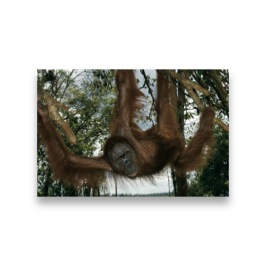
INDONESIA
Orangutan, Tanjung Puting National Park, Kalimantan, Borneo.
An orangutan comes to visit, one of some 6,000 orangutans surviving in Tanjung Puting National Park, Kalimantan, Indonesian Borneo. © 2008 Dancing Star Foundation
-
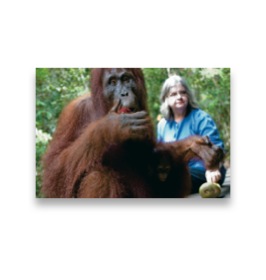
INDONESIA
Orangutan, Tanjung Puting National Park, Kalimantan, Borneo.
An orangutan feeds in Tanjung Putting National Park, Kalimantan, Indonesian Borneo. Dr. Birute Galdikas, the world's foremost expert on orangutans, who has spent more than 35 years in the field living with them, is pictured in the background. © 2008 Dancing Star Foundation
-

INDONESIA
Dr. Birute Galdikas, Tanjung Putting National Park.
Dr. Birute Galdikas kisses one of the many orangutans she and her team look after at Tanjung Putting National Park. Dr. Galdikas has actually raised hundreds of orphans whose parents were captured, traded, sold, or eaten. Despite such trauma enshrouding these otherwise magical tropical dry peat swamps and forest, this scientist of enduring international stature has managed to maintain hope, and to engender one of the most important sanctuaries left on earth for these primates "most similar to us" in terms of emotions, perspective, and consciousness, according to Dr. Galdikas. © 2008 Dancing Star Foundation
-

NEW YORK
Central Park, New York City.
During the annual Puerto Rican parade along Fifth Avenue in Manhattan, Central Park forms a backdrop for one of the great celebrations on the planet. And yet, an even greater, if much quieter festival occurs, and that is the daily pilgrimage into the heart of the more than 800 acres of semi-wild Central Park itself. More than 25 million people per year come find solace and joy in this extraordinary urban sanctuary. © 2010 Dancing Star Foundation
-
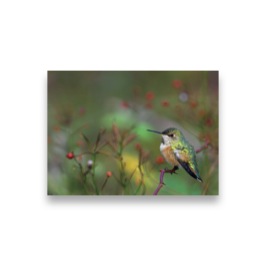
NEW YORK
Hummingbird, Central Park, New York City.
A Female Rufous Hummingbird feeding in Central Park. Photo Courtesy of Cal Vornberger.
-
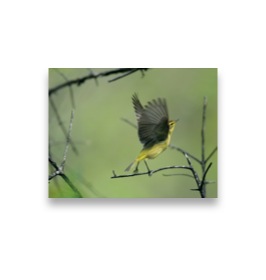
NEW YORK
Palm Warbler, Central Park, New York City.
A Palm Warbler takes to flight in Central Park. Photo Courtesy of Cal Vornberger.
-
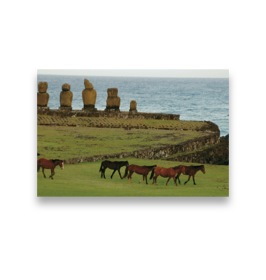
EASTER ISLAND
Wild horses, Rapa Nui
Wild horses on Rapa Nui, Easter Island, before an array of stone moais, the sculptured edifices of a past civilization. Today, the depauperate island of nearly 3,000 inhabitants is engaged in an ecological renaissance, replanting the island with natives, and trying to bring back at least some representative species that have long vanished from this remote Chilean island. © 2008 Dancing Star Foundation
-

AUSTRIA
Michael Aufhauser, founder and President, Gut Aiderbichl Sanctuary, Salzburg.
Michael Aufhauser, founder and President of the Gut Aiderbichl Sanctuary in Salzburg, Austria, sits at home with a few of his friends. Through his courage, gentleness, tenacity, and common sense, Aufhauser has unleashed a sea of change in attitudes about both wild and domestic animals throughout both Austria and Germany, where his sanctuaries are located. Photo Courtesy of Gut Aiderbichl.
-

AUSTRIA
Gut Aiderbichl, Salzburg.
One of the many residents of Gut Aiderbichl in Salzburg. Photo Courtesy of Gut Aiderbichl.
-
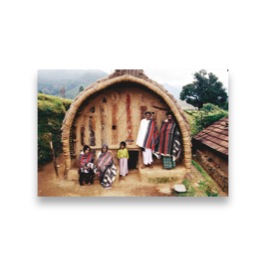
INDIA
Nilgiris, Tamil Nadu State, Southern India.
A family of Todas before their hamlet in the Nilgiris, Tamil Nadu State, Southern India. Photo Courtesy of Robert Radin.
-
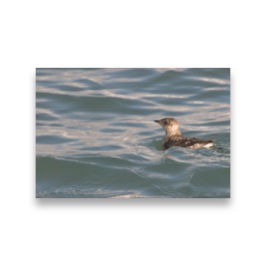
ALASKA
Kittlitz's murrelet (Brachyramphus brevirostris), Wrangell-St. Elias National Park.
This tenacious little seabird, Kittlitz's murrelet (Brachyramphus brevirostris) seen here in Southeastern Alaska's Wrangell-St. Elias National Park, is one of the most endangered seabirds in North America and Siberia. In the last 15 years, an estimated 80% of the North American population has vanished, possibly resulting from complications of global warming. Biologists with U.S. Fish & Wildlife and the U.S. National Park Service are seeking answers before it's too late to save this incredible little Alcidae family bird. © 2008 Dancing Star Foundation
-

NEW ZEALAND
Kakapo, Whenua Ho
A Kakapo on Whenua Ho, southern New Zealand. The only flightless parrot in the world, there are a total of 93 Kakapo (Strigops habroptilus) left. A thousand years ago, in New Zealand, it was one of the most numerous of all bird species but the introduction of cats and stoats, as well as the loss of nearly 70 percent of all forests in New Zealand have reduced this remarkably gentle avian to disastrous numbers. Today, New Zealand conservationists have made this iconic parrot a crucial component of the entire national focus on bringing back what has been described as "the dawn chorus". Photo Courtesy of Paul Jansen
-
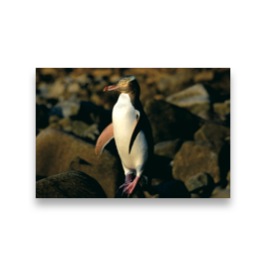
NEW ZEALAND
Yellow-Eyed penguin (Megadyptes antipodes), Maori
A Yellow-Eyed penguin (Megadyptes antipodes) or hoiho in Maori. The rarest of all 18 known penguin species, and one of 13 such species native to New Zealand's mainland or sub-Antarctic territories, the Yellow-Eyed is the third largest of the penguins, after emperors and kings. Causes of its decline include disease agents and starvation, which might well be related to global warming impacts on the penguins' food source. Those that survive, however, can live in excess of thirty years. Photo Courtesy of Brent Beavan.
-
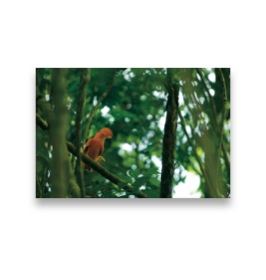
SURINAME
Cock of the Rock (Rupicola rupicola), Central Suriname Nature Reserve.
Cock of the Rock (Rupicola rupicola). Just minutes before a giant tree collapsed, nearly taking out our entire expedition, we reached this lek, or mating grounds of this iconic, Suriname bird species belonging to the Cotingidae family. The males display like this for much of the year. Females use mud to build their nest against cliffs, in this case the enormous granite Voltzberg in the heart of the Central Suriname Nature Reserve. © 2008 Dancing Star Foundation
-
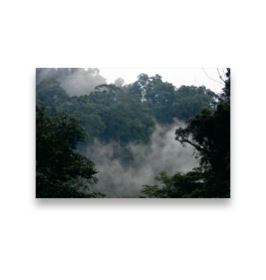
BRUNEI
Ulu Temburong National Park.
Although it comprises no more than one percent of all of Borneo, Brunei protects over 71 percent of her rainforest, the vast majority consolidated in its new, and first national park, Ulu Temburong. While the rest of Borneo is losing forest faster than any tropical region on the planet, Brunei -abetted by its oil and gas wealth- has come to terms with ecological reconciliation. The results are gratifying: research at the Kuala Belalong Rainforest Field Studies Centre, near to where this photo was taken, has shown that a single tree within Ulu Temburong National Park may contain as many as 400 different species of beetle. © 2008 Dancing Star Foundation
-
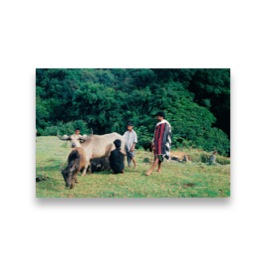
INDIA
Todas of the Nilgiris, Southern India.
This is one of the last vegetarian tribes anywhere on earth. Numbering no more than 1300, the Todas date back thousands of years. Their mountain culture depends entirely on their worship of buffalo. The Todas also inhabit one of the most important biological sanctuaries - of which they are the principal stewards- in all of India, and the first to be recognized by UNESCO. This exquisite tribe presents a window on the world of what humanity is truly capable of: total ecological non-violence. Photos Courtesy of Dr. Tarun Chhabra
-
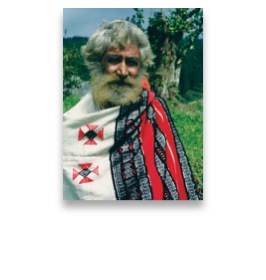
INDIA
Todas of the Nilgiris, Southern India.
This is one of the last vegetarian tribes anywhere on earth. Numbering no more than 1300, the Todas date back thousands of years. Their mountain culture depends entirely on their worship of buffalo. The Todas also inhabit one of the most important biological sanctuaries - of which they are the principal stewards- in all of India, and the first to be recognized by UNESCO. This exquisite tribe presents a window on the world of what humanity is truly capable of: total ecological non-violence. Photos Courtesy of Dr. Tarun Chhabra

